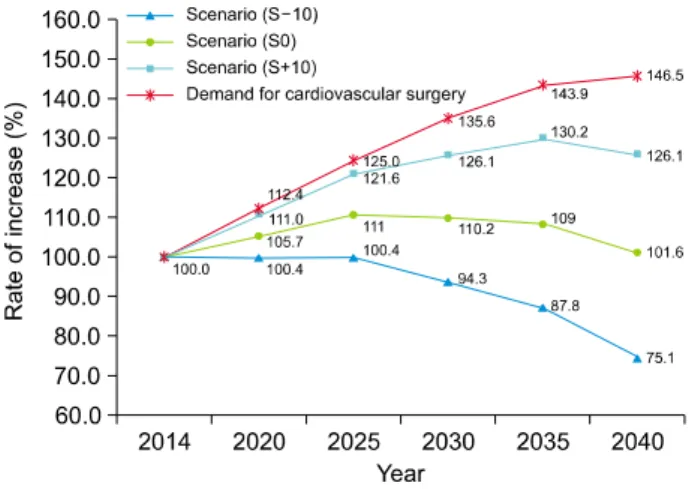ISSN: 2233-601X (Print) ISSN: 2093-6516 (Online)
Received: October 6, 2016, Revised: October 23, 2016, Accepted: October 24, 2016, Published online: December 5, 2016
Corresponding author: Nam Hee Park, Department of Thoracic and Cardiovascular Surgery, Keimyung University Dongsan Medical Center, Keimyung University School of Medicine, 56 Dalseong-ro, Jung-gu, Daegu 41931, Korea
(Tel) 82-53-250-7307 (Fax) 82-53-250-7307 (E-mail) nhpark@dsmc.or.kr
© The Korean Society for Thoracic and Cardiovascular Surgery. 2016. All right reserved.
This is an open access article distributed under the terms of the Creative Commons Attribution Non-Commercial License (http://creativecommons.org/
licenses/by-nc/4.0) which permits unrestricted non-commercial use, distribution, and reproduction in any medium, provided the original work is properly cited.
Projections of Demand for Cardiovascular Surgery and Supply of Surgeons
Jung Jeung Lee, M.D., Ph.D. 1 , Nam Hee Park, M.D. 2 , Kun Sei Lee, M.D., Ph.D. 3 , Hyun Keun Chee, M.D., Ph.D. 4 , Sung Bo Sim, M.D., Ph.D. 5 , Myo Jeong Kim, M.S. 6 ,
Ji Suk Choi, Ph.D. 6 , Myunghwa Kim, M.P.H. 6 , Choon Seon Park, R.N., Ph.D. 6
Departments of
1Preventive Medicine and
2Thoracic and Cardiovascular Surgery, Keimyung University School of Medicine,
3

